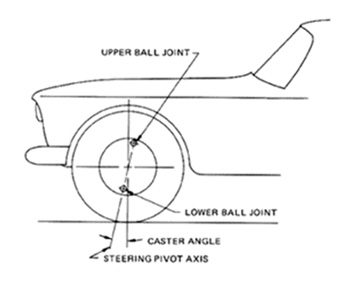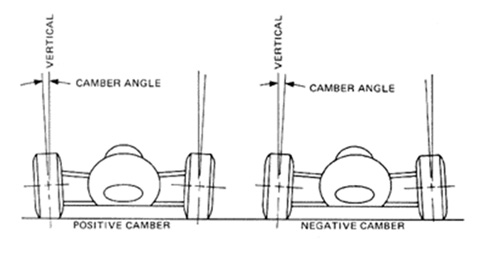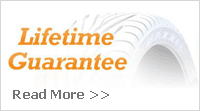FAQ
1. What is the most common cause of improper balancing?
2. Most aftermarket wheel is?
3. A Vibration felt in the seat indicates?
4. Causes of improper balancing?
5. Possible tire /Wheel problem other than balance?
6. Other vibration generators?
7. How to diagnose problem?
Look at vibration transfer path. Steering wheel shakes cause from front wheel balance, front wheel out of round, front suspension, front drive components and warped brake disc. Seat shake cause rear wheel balance, rear wheel out of round, rear suspension, drive train or rear wheel drive and rear brake dragging. Fender, hood, mirror shake cause due to engine problem.
Wheel alignment
1)Why do we need Alignment?
A vehicle is properly aligned when all suspension and steering components are sound sand when the tire and wheel assemblies are running straight and true. If you notice uneven tread wear this could be due to a misalignment and must be serviced by a professional.
2)What is basic function of Suspension?
3)What are the three Fundamental Elements of Alignment?
The three basic elements are caster,camber and Toe.
4)What is Caster
Castor is simply be described as the backward or forward tilt of the Mac Pherson strut or hub assembly, when the vehicle is viewed from the side . Positive Castor is when the strut leans towards rear of the vehicle and negative when it leans towards the front of the vehicle.
The purpose of Caster is that the King Pin is usually set so that tire contact point with the ground is behind the intersection point between the steering axis and the ground this forces the tire to always go head and improves straight ahead drivability and handling .Larger caster angle gives better steering wheel return and straight ahead drivability.Larger caster angle can also cause heavier steering.

5)Caster - "When too much caster is never enough"? - 5 reasons why.
6)What is Camber?
Camber is the angle of the wheel, measured in degrees, when viewed from front of the vehicle. If the top of the wheel is leaning out from the centre of the car, then the camber is positive.If its leaning in, then camber is negative.
The purpose of Camber is to improve steering and cornering performance .Larger positive angle gives better handling control ,handling and steering return and reduces cornering capacity .Larger negative angle better initial handling response, better cornering capacity and reduce handling control.

7)What is Toe?
By toe measurement, we are looking at how parallel the wheel are in relation to each other , when viewed from above.
8)What happens when Toe measurements are out of manufacturers specification?
9)What happens when camber are out of manufacturers specification?
10)What happens when Castor is out of manufacturers specification?
11)Castor Vs camber, try castor first. Why?
- Improper Mounting
2. Most aftermarket wheel is?
- Lug centric
3. A Vibration felt in the seat indicates?
- Rear wheel imbalance
4. Causes of improper balancing?
- Improper mounting on balancer
- Balancer calibration
- Drive train vibration
- Eccentricity problem
- Improper lug nut torque
- Bent wheel rim
- Force variation
5. Possible tire /Wheel problem other than balance?
- Run out
- Pilot on axle does not match wheel
- Flat spot from bent rim
- Tyre may have slipped on rim during heavy acceleration on braking
- Heavy out of balance hubcap
- Rust on mounting surface, drum retainer clips, drum weights
- Disc bent
- Flat spot from hard braking
- Tyre pressure different from previous tires
- Mud and asphalt debris inside rim
- Foreign material inside Tyre
6. Other vibration generators?
- Shocks, ball joints, springs shackles, broken springs
- Universal joints, transmission trail shafts, undercoating on rotating component
- Motor mounts, loose accessories, belts/pulleys
- Tire rods ends, front wheel bearing, and idler arms
- Variations in torque can create a warped brake disc or even stud breakage
7. How to diagnose problem?
Look at vibration transfer path. Steering wheel shakes cause from front wheel balance, front wheel out of round, front suspension, front drive components and warped brake disc. Seat shake cause rear wheel balance, rear wheel out of round, rear suspension, drive train or rear wheel drive and rear brake dragging. Fender, hood, mirror shake cause due to engine problem.
Wheel alignment
1)Why do we need Alignment?
A vehicle is properly aligned when all suspension and steering components are sound sand when the tire and wheel assemblies are running straight and true. If you notice uneven tread wear this could be due to a misalignment and must be serviced by a professional.
2)What is basic function of Suspension?
- To support to vehicle's weight
- To Avoid vehicle body shake by absorbing vibration on rough road condition
- To make the tire/wheel achieve designed performance -traction or braking -by pressuring them to the ground
- To ensure driving stability by setting a most suitable position against several force from the tire/wheel and car body
3)What are the three Fundamental Elements of Alignment?
The three basic elements are caster,camber and Toe.
4)What is Caster
Castor is simply be described as the backward or forward tilt of the Mac Pherson strut or hub assembly, when the vehicle is viewed from the side . Positive Castor is when the strut leans towards rear of the vehicle and negative when it leans towards the front of the vehicle.
The purpose of Caster is that the King Pin is usually set so that tire contact point with the ground is behind the intersection point between the steering axis and the ground this forces the tire to always go head and improves straight ahead drivability and handling .Larger caster angle gives better steering wheel return and straight ahead drivability.Larger caster angle can also cause heavier steering.

5)Caster - "When too much caster is never enough"? - 5 reasons why.
- Maximise tyre contact patch during roll
- Improve turn-in response
- Increase directional stability
- >Maximise tyre contact patch during braking and acceleration
- Improved steering feel and self-centre
- Increases dynamic negative camber (on turn)
6)What is Camber?
Camber is the angle of the wheel, measured in degrees, when viewed from front of the vehicle. If the top of the wheel is leaning out from the centre of the car, then the camber is positive.If its leaning in, then camber is negative.
The purpose of Camber is to improve steering and cornering performance .Larger positive angle gives better handling control ,handling and steering return and reduces cornering capacity .Larger negative angle better initial handling response, better cornering capacity and reduce handling control.

7)What is Toe?
By toe measurement, we are looking at how parallel the wheel are in relation to each other , when viewed from above.
- If the wheels are closer together at the front then this is positive camber or Toe-in .
- If the wheels are closer at the back (Rear) then this is negative or Toe-out.
8)What happens when Toe measurements are out of manufacturers specification?
- Wear in Outside edge of tyre ( Excessive Toe-in)
- Wear in Inside edge of the tyre ( Excessive Toe - Out)
- Feathering wear across the tread.
- Poor handling .
- Increased fuel consumption due to tyre friction.
9)What happens when camber are out of manufacturers specification?
- Wear on inside edge of the tyre. ( Excessive Negative Camber)
- Wear on outside edge of tyre.( Excessive Positive Camber)
- Pulling to one side. ( if camber different from side to side)
- Excessive wheel bearing wear.
- Poor handling and steering.
10)What happens when Castor is out of manufacturers specification?
- Heavy steering ( Excessive Positive castor).
- Road shocks felt through steering. ( Excessive positive castor).
- Steering vibration / shimmy.( Excessive negative castor)
- Lack of steering self centering( Excessive negative castor)
11)Castor Vs camber, try castor first. Why?
- Camber doesn't improve turn-in, positive caster does.
- Camber is not good for tyre wear.
- Camber doesn't improve directional stability.
- Camber adversely effects braking and acceleration.






